Bike boom’s hidden headache
May 15, 2014
There’s good news on the cycling front, with a new report showing L.A. bike use growing by 7.5% and new lanes, paths and “sharrows” buzzing with two-wheeling commuters and recreational cyclists.
But there’s also a less heralded statistic in the 2013 Bike and Ped Count released this week by the Los Angeles County Bicycle Coalition:
Only 46% of L.A. cyclists wear helmets.
That’s troubling to medical experts like Dr. Mitchell Katz, director of the county’s Department of Health Services and a (helmet-wearing) cyclist in his own right.
“The evidence from a medical point of view is very clear: helmets prevent brain injury, and brain injuries are some of the most devastating events besides the possibility that you might actually die,” Katz said.
Katz said his own experiences on the streets of L.A. corroborate the report’s findings on helmet-wearing.
“I’ve noticed that certainly more than half of the bicyclists do not. I think young people are especially guilty of not wearing helmets,” Katz said.
Those riders are taking a big chance, given that 15- to 19-year-olds were the bicyclists likeliest to land in L.A. County emergency rooms in 2012, with 64.3 per 100,000 people in that population showing up to be treated for bike injuries.
Injuries to Los Angeles County cyclists are steadily increasing, from 2,916 hurt in collisions with vehicles in 2007 to 4,759 injured in 2011, according to state data provided by the county Department of Public Health. Twenty-six bike riders were killed in 2007 and 30 in 2011. Only 14% of those injured and just 20% of those killed were using “safety equipment” at the time of their accidents in 2011.
However, the state injury data did not include a specific breakout for helmet usage within the category of “safety equipment”—something Katz said could be helpful in raising consciousness about the dangers of riding without protective headgear.
“I think there is a misconception, that people think, ‘I’m a great bicycle rider. I don’t need to wear a helmet.’ What they’re not thinking of is it doesn’t have anything to do with what kind of bicycle rider I am. It has to do with whether a car hits me and I fly through the air. You don’t have any control, once you’re flying through the air, of how you land,” Katz said.
Adults aren’t legally required to wear bike helmets in California, but advocacy groups like the Bicycle Coalition officially recommend them. And when elected officials like Los Angeles Mayor Eric Garcetti go out for a spin on Bike to Work day, they’re invariably photographed wearing a helmet.
So why aren’t more L.A. cyclists following their lead?
The answer is complicated—and, within the cycling community, often polarizing.
“It can get pretty heated once you start talking about helmet use because there’s a contingent of bicyclists who are really adamant about wearing helmets and there’s a contingent of bicyclists who are really adamant about not wearing a helmet,” said Colin Bogart, education director for the Bicycle Coalition, who advises his students to don helmets and always wears one himself.
Some people “just don’t think it’s that important…it’s the ‘it’s-not-gonna-happen-to-me’ sort of thing,” Bogart said. Then there are those sometimes called “invisible riders”—day laborers and other workers commuting by bike out of necessity and perhaps unable to afford safety equipment like helmets and lights.
And, particularly among younger riders, “there’s the whole coolness factor, right?” Bogart said. “It’s like, ‘You’re a dork if you wear a helmet.’ ”
Underlying the contentious issue is the feeling—held even by bike advocates who strongly recommend helmet use—that too much focus on headgear diverts attention from a broader mission of pushing for better, safer cycling spaces throughout the city.
“I think ultimately what we’d like to see is a situation in which our built environment is such that people don’t even feel like they need to have a helmet because they feel so safe doing it,” Bogart said. “When you look at photographs of people biking in a lot of these cities in the world where the percentage of cycling is way beyond anything we have here, almost nobody is wearing a helmet. [That’s] because it’s viewed as so everyday and so not hazardous to your safety that people just ride without ‘em. “
Although some, like Dr. Katz, think it would be a good idea to pass laws mandating helmet use for adult bicyclists as well as those 18 and under, Bogart said he believes that could deter would-be riders from joining the growing cycling movement.
“That’s a real concern, that if you make it a requirement, a lot of people are just going to say, OK, forget it,” Bogart said.
The helmet statistic was not highlighted in the bike count’s official news release. But it might dovetail with another finding: that fewer than 20% of L.A. cyclists are female. That suggests there still aren’t enough safe bikeways to attract women, traditionally considered more “risk-averse” riders.
To get more women, children and older people bicycling on city streets, the new report calls for creation of more “protected bikeways,” which carve out dedicated space for cyclists to ride with some separation from automobile traffic.
Because let’s face it: “If you’re riding on the streets as they are right now, you’re pretty risk tolerant,” said Eric Bruins, the coalition’s planning and policy director.
Posted 5/15/14
Kindle-ing interest in reading
May 15, 2014
Before Los Angeles County Librarian Margaret Todd boards a plane, she often asks her staff to “surprise” her by uploading some titles to her Kindle. For Todd, relying on the expertise of librarians is like consulting staff recommendations at a bookstore before choosing her next read.
Some library users will soon have a chance for a similar experience when the county’s new eReader Pilot Program begins rolling out. Come June or July, hundreds of Kindle Paperwhite devices—complete with preloaded titles in a variety of genres—will be made available to patrons as easily as taking out any book on the shelves.
“We are trying to learn and grow with our customers,” says Migell Acosta, the library’s assistant director and spokesman. “It’s a way for us to test how our customers want to read their books.”
While numerous public libraries have adopted eBook lending programs for customer-owned devices, Los Angeles County libraries are joining a much shorter list of libraries nationwide that lend eReaders. In 2011, the Sacramento Public Library system became one of California’s earliest adopters of a large-scale eReader program, using the Nook device instead of the Kindle. Acosta says Los Angeles County chose the Kindles because of a tool that allows for easy loading of material and automatic loading of additional titles in the future.
Initially, 705 devices will be made available in 24 libraries throughout the county’s First and Fifth supervisorial districts. Later this summer, three libraries in Supervisor Zev Yaroslavsky’s Third District are expected to join the pilot program, with 190 devices distributed to the Topanga, San Fernando and Agoura Hills libraries.

L.A. County Librarian Margaret Todd says nearly 900 Kindles will be available at selected libraries.
According to librarian Todd, the cost of each is $250, including $80 for content. The devices are primarily being paid for with county funds, with some help from private donations.
Todd says the price is now competitive with the cost of stocking traditional books. “If a kid checks out seven of our books and loses them, they’d have to pay us more than what the Kindle is worth,” she says. The devices have no WiFi and are locked to prevent downloading titles directly from Amazon.
The library plans to treat the devices like traditional books, with two exceptions: They must be returned to the lending library and they cannot be put into book drops because of the potential for damage. Borrowers under 18 must have the same parental permission currently required for borrowing audio and video materials.
Each Kindle comes loaded with 100 public-domain titles selected by Amazon. In addition, each will include 10 to 15 genre titles in more than 30 categories that include biography/memoir, popular nonfiction, urban/street lit, romance and young teen fiction. The reading rosters also include entire book series because library visitors tend to want to borrow them all at once. These include the popular Diary of a Wimpy Kid, Game of Thrones and Lord of the Rings.
As with traditional books, Kindle titles are being selected by the county library’s collection development department, which chooses books for the whole district and are not tailored to any one neighborhood. In that way, collections can easily circulate from library to library, officials say.
To load the devices, library spokesman Acosta says the collections department must consider the Amazon’s eBook price for each title, which can vary like stock prices. “For example, there was a book that won a Pulitzer Prize and the price spiked from $9.99 to $25.99. If a book gets signed for a movie deal, then we see the price spike,” he says.
San Fernando Library manager Hilda Casas is excited about the new program. She says the Kindles will serve as additional available copies of popular books and can be adjusted to larger print for customers who need it.
But in the end, a book is a book, Casas says.
“Some people prefer paperbacks, some people prefer hard copies, some prefer an eReader,” she says. “We’re trying to make that option available.”
Posted 5/15/14
Garden grows more than just plants
May 15, 2014
It’s difficult to predict just how a garden will grow. At Sylmar’s new El Cariso Mountain Garden, they’re harvesting not just tasty veggies but also stronger community bonds.
The garden, which is having its grand opening celebration on Saturday, features 39 raised beds, fruit trees, play areas and even a tricycle path. It’s the latest product of the Little Green Fingers Collaborative, a joint effort by the Los Angeles Conservation Corps and the L.A. Neighborhood Land Trust to serve local families with young children.
And those families have responded enthusiastically.
Wendy Lynch signed up for a plot in part to teach her kids—Travis, 5, and Mbali, 2—where their food comes from.
“Kids love dirt and water, so it’s a ton of fun,” Lynch says. One plot is set aside for “kids to just play and turn the dirt over. It’s filled with kid-proof plants.”
Lynch discovered the garden last fall when it was being built. Her parents spotted the construction in a seldom-used corner of the county’s El Cariso Community Regional Park during their daily walk along the park’s bike path. “They called me up and said ‘You have to get down here,’ ” Lynch recalls.
Lynch, a self-described stay-at-home mom, said she treasures her work in helping to manage the garden, of which she is the current co-treasurer.
“I miss that kind of thing, not working,” Lynch says. “This gives me a real sense of being productive.”
Getting folks like Lynch to grab the reins is essential to the long-term survival of the garden, according to Juan Salas, an organizer with the collaborative. The project is funded through 2017 by First 5 L.A., but then it will be handed over to the community to manage. The gardeners will have to raise the necessary funds to keep things growing.
Another community member, Liziel Estrada, already has helped the garden score a major grant. Estrada discovered and applied for a Grow Your Park grant from the National Recreation and Parks Association. The El Cariso garden was awarded $10,000, making it one of only 15 organizations nationwide to receive a grant. The gardeners plan to use the money to build a gazebo, add new features and continue battling what, so far, has been the biggest threat to a successful harvest—a persistent gopher and rabbit problem.
“The first three months that the gardeners were planting things, they noticed that there were no leaves,” organizer Salas says. “Gophers would pull the plant straight underground just like in the cartoons. I never knew it happened like that but it actually does.”
Additional fencing and wiring installed at the base of the garden beds seems to be helping, and the garden is now growing lush and green. Such challenges are not necessarily a bad thing because they serve as important learning experiences for the young kids who are the primary target of the initiative, says Jessica Monge, who oversees the project for First 5 L.A.
Beyond the open-air fun it offers, the program also aims to combat childhood obesity by promoting healthy eating at home. To that end, hands-on nutrition and cooking classes are part of the program. Estrada says her family has already reaped some of the benefits.
“We’ve had some carrots, we have some kale right now, we’ve had some lettuce,” Estrada says. “Seeing everything grow makes my son want to eat fruits and vegetables even more, which is great.”
But for her fellow gardener Lynch, the most unexpected benefits of the program have been the new connections she’s made.
“When you live in a house you know your immediate neighbors but you don’t meet your community,” Lynch says. “I didn’t know we had a Neighborhood Council; now I know who to go to if I want to get things done. I’ve also made a lot of new friends. With kids, sometimes it’s hard to know who you can trust. You get to see what kind of people they are when they’re working the garden.”
The Sylmar project is the fourth Little Green Fingers garden (others are in Koreatown, South L.A. and Pasadena) and the first to be located in a park.
Most of the garden’s plots already have been reserved by neighborhood families, a school and two local organizations, but those interested in digging in can email Juan Salas ([email protected]) or Monica Curiel ([email protected].) Or they can attend Saturday’s grand opening, from 10 a.m. to 2 p.m. at the western edge of El Cariso Park, 13100 Hubbard Street. There will be educational displays, arts and crafts for kids, and a free lunch prepared by one of the gardeners who is an executive chef at a local restaurant. Picnic blankets are highly recommended.
Posted 5/15/14
Date set for 405 carpool lane opening
May 13, 2014
After five years of construction and epic freeway closures that drew international attention, the 405 Project is nearly ready for its biggest milestone: opening of the 10-mile northbound carpool lane that’s at the heart of the $1 billion-plus endeavor.
Officials have set a date for the lane’s grand opening—Friday, May 23, just in time for Memorial Day weekend traffic.
The lane opening doesn’t spell the end of the project altogether; numerous smaller tasks, such as landscaping, remain. But it marks a major moment of relief for construction-weary residents and motorists who have endured years of disruptions through the Sepulveda Pass.
“People in this part of town have put up with a lot, and it’s finally time for the public to begin experiencing one of the major benefits of this project,” said Supervisor Zev Yaroslavsky, who represents the area and popularized a name, Carmageddon, for the weekend-long closure heard ‘round the world—twice.
The 405 Freeway through the Sepulveda Pass, linking the San Fernando Valley and the Westside, is one of the nation’s busiest traffic hotspots, and the carpool lane is the central element in the project to improve it.
The new northbound lane will close a gap in the 405’s high-occupancy vehicle network and create the nation’s longest continuous carpool lane. For the first time, it will be possible for a carpooler to drive seamlessly from the Orange County border to the 101 Freeway. A 2.4-mile stretch of the new lane on the 405 was opened with little fanfare late last month, and is serving as a general purpose lane available to all motorists until the full carpool lane is inaugurated.
The carpool lane is not the only benefit to come out of the massive project, a joint undertaking by Metro and Caltrans.
Workers also have rebuilt three major bridges across the freeway and constructed safer, wider new flyover ramps at Wilshire Boulevard, along with soundwalls and other improvements.
Taken as a whole, the project is expected to improve capacity and safety, and to help relieve worsening congestion on the perennially challenging freeway in the years ahead—although no one’s claiming it will actually reduce the onslaught of traffic.
“Because of the project’s location and the constraints associated with development in the area, the I-405 Sepulveda Pass Improvements Project will not have a large influence on future traffic,” according to a project fact sheet. However, improvements to the roadway are expected to help mitigate congestion as 405 traffic through the Sepulveda Pass increases from an estimated 300,000 vehicles a day now to 430,000 in 2030.
Posted 5/13/14
Board clears way for $2B jail
May 8, 2014
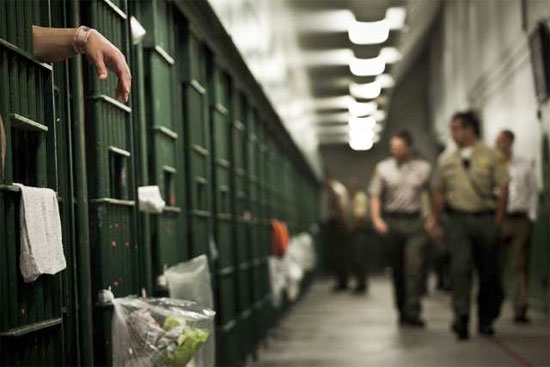
The grim Men's Central Jail will be razed for one that focuses on the needs of mentally ill inmates.
On the outskirts of a gentrifying downtown Los Angeles, where trendy eateries and pricey lofts are drawing a wave of hip urban pioneers, there sits a residence of a vastly different sort–“an antiquated, dungeon-like facility,” home to some 5,000 people, many of them mentally ill.
That’s how a blue-ribbon citizen’s commission in 2012 described the county’s notorious Men’s Central Jail, which has been around since the Kennedy Administration. More recently, the so-called MCJ was ground zero in the Sheriff’s Department brutality scandal that led to the indictments of 20 deputies and the departure of Sheriff Lee Baca.
For a decade, the Los Angeles County Board of Supervisors has been debating various plans to replace the old lockup with one that reflects the latest thinking in modern jail construction and management. Each time, the price climbed. The stakes were rising, too, as the federal government intensified its oversight of how the county was providing constitutional care for thousands of inmates with mental health problems.
So on Tuesday, under increasing pressure to act, a divided board set in motion what promises to be the most expensive construction project in the county’s history. It approved a nearly $2 billion plan to replace Men’s Central Jail with a facility designed to confront the unique architectural and staffing requirements for treating mentally ill inmates in county custody.
The board majority, which also voted to move forward the renovation of Mira Loma Detention Center in Lancaster to house women, picked one of five options for the new downtown jail provided by Vanir Construction Management, which was hired as a consultant by the supervisors. The company will not be a bidder on the project.
While there was no disagreement among board members about the need to replace the Men’s Central Jail, the potential price of the undertaking drew strong warnings from Supervisor Zev Yaroslavsky. He cast the lone vote against authorizing the expenditure of $30 million to begin design work and an environmental review of Vanir’s “Option 1B.” (Voting in favor of the plan were Supervisors Don Knabe, Gloria Molina, and Michael D. Antonovich. Mark Ridley-Thomas abstained.)
Yaroslavsky argued that the board should have been given alternatives to incarceration that might reduce the number of mentally ill inmates in the new jail, thus possibly lowering the construction and operating costs borne by taxpayers.
“I think I have been, as a member of this board, somewhat shortchanged by not having that information available to me as I’m being asked to make a decision—a $2 billion decision,” Yaroslavsky said, adding: “All of us have been around long enough to know that if you’re telling us it’s $2 billion today, it’s not going to go down. It’s only going to go up.”
Yaroslavsky urged the board to delay a vote until more information on diversion programs for the mentally ill was provided, rather than being forced to decide solely on a series of construction scenarios. He also noted that District Atty. Jackie Lacey was leading a high-powered task force on mental health and substance abuse diversion that could inform the board’s ultimate decision.
Testifying before the board, Lacey said that since a big chunk of the new jail’s cost is for the mentally ill, “you should know that there’s a committed group of professionals …who are looking for alternative ways to address this issue. We’re serious about it, and I’m optimistic.”
Assistant Sheriff Terri McDonald, who oversees custody operations, acknowledged the importance of increasing capacity for inmates placed in community diversion programs. “I don’t think the right solution is just build, build, build, build. It’s too expensive. It’s not sustainable.”
But, she said, such efforts must “run along parallel tracks” with the design and construction of a new jail, which is essential for the inmates and the county’s legal position with the federal government.
Supervisor Antonovich, who, with Molina, pushed the vote forward, agreed: “If we don’t act,” he said, “the choice will not be ours, but up to a receiver who will force us to act, at a much higher cost.”
Posted 5/8/14
Locking in fares on the Orange Line
May 8, 2014
Fare gates—they may not be just for trains anymore.
When Metro began latching the turnstiles to L.A.’s subways last year, it marked the beginning of the end for the decades-old honor system that enabled many to ride for free. Since then, gate latching has spread rapidly. By the end of May, all rail stations with turnstiles will require a valid TAP card for entry.
Now similar barriers may be coming to the Orange Line busway, which provides rail-like service in bus-only lanes.
A Metro report released Monday said it would be possible to gate all 18 stations of the San Fernando Valley line. Metro’s Board of Directors later this month will decide whether to install gates at an estimated cost of $24.6 million, or go with another option, such as rearranging non-latched card readers—known as “stand-alone validators”—to encourage more people to use their TAP payment cards.
The report recommends a more detailed engineering analysis on installing gates while also testing the stand-alone validator plan at two stations. The non-gating option is cheaper initially and quicker to implement, but it would still rely on the honor system and enforcement by the Sheriff’s Department, said David Sutton, who heads up the gate latching project for Metro.
“Gating is more compulsory,” Sutton said. “It’s going to stop you if you don’t tap. A stand-alone validator is not going to stop you.”
The effectiveness of simply rearranging the TAP card validators is unknown. The option is currently being tested at light rail stations but “the jury is still out,” Sutton said.
If the agency decides to go the gating route, most Orange Line stations will pose no major logistical barriers. However, because the Warner Center station is situated on a public sidewalk, the agency would need to purchase land from the City of L.A. to create space for gates. And, at the heavily-used North Hollywood Station, twice as many gates will be needed to ensure that passengers can get in and out quickly and safely. The entire process, from planning to construction, could take two years or more, Sutton said.
For gating on the Orange Line to be effective, additional fencing must be installed. The current fencing along the backs of station platforms is only 3½ -feet high. It would need to be modified or replaced with 5-foot-high fencing to keep out all but the most dedicated scofflaws.
The move toward gating the Orange Line started in January, after Sheriff’s reports showed that up to 22% of riders were not paying their way. Metro’s Board of Directors, acting on a motion by Supervisor Zev Yaroslavsky and L.A. City Councilmember Paul Krekorian, directed the agency to develop options to fix the problem.
As plans move forward, Sheriff’s Commander Michael Claus—Metro’s head of security—has already ramped up enforcement. By February 11, the fare evasion rate had come down to 7%. And, to bolster his team’s efforts, Claus released a 30-second video that is being broadcast on the buses via on-board televisions. The clip shows riders how to load and use their payment cards—and what the consequences will be if they don’t. Citations for single offenses are usually $75, the current cost of an unlimited 30-day pass.
The estimated $24.6 million cost of gating the Orange Line could be offset by increased revenues. Last fall, Metro estimated it would recover an additional $6 million per year in fares from latching the Red Line alone. Still, according to agency spokesperson Paul Gonzales, installing gates may prove too costly at some locations.
“Some stations may take 10 or 15 years to pay off,” Gonzales said. “Is that worth it? That’s something the Board will have to decide.”
The Orange Line decision comes as the agency faces the possibility of fares going up—always a contentious proposition. Still, even if fares increase, the riding public may be able to take some solace in the fact that there will be fewer freeloaders on the system.
“There’s a basic element of fairness,” Gonzales said. “People think, ‘Why should I pay and other people not pay?’ ”
The decision on the Orange Line goes to the System Safety and Operations committee meeting next week before heading to the full Board for consideration on May 22.
Posted 5/9/14
Ghostly roadside remembrances
May 8, 2014
The roadside works of art are ethereal, almost glowing, alive with flowers or flickering candles. “Ghost bikes,” as they’re called, gently command attention even on the fast-moving streets of Los Angeles.
But the white bikes’ presence goes beyond artistic provocation. They also speak to a life-and-death reality—the fact that even as bicycling in L.A. grows in popularity, too many bicyclists are being hurt or killed on our streets.
Danny Gamboa keeps a running spreadsheet of every Southern California cycling fatality. So far in 2014, 37 names have joined his list, leading to installation of white “ghost bikes” from Alameda Street to Sunset Boulevard, from Huntington Beach to Twentynine Palms.
“You strip a bike, you paint it, you go to the place where this tragedy happened and you’re basically trying to make the world a better place,” says Gamboa, a 40-year-old Long Beach filmmaker and artist who chronicled the Ghost Bike phenomenon in a documentary motion picture he made last year with his partner, Kat Jarvis. He is part of the story himself, working with a loose coalition of about a dozen volunteers who mobilize after cycling fatalities to paint and install bikes in honor of fallen friends, family members or even strangers.
“You’re trying to help the community heal and come together,” he says. “They write on the bike, ‘I don’t know you but I’m sorry for your loss.’ People bring flowers and candles and pictures. It’s a really touching tribute, and stuff like that is what keeps us going.”
This year, as Bike Week dawns in Los Angeles, Gamboa and his group are being recognized for what they do.
Ghost Bikes L.A. will receive a “Golden Spoke” award on Tuesday, May 13, as part of the 11th annual “Blessing of the Bicycles” event at Good Samaritan Hospital. The honor—bestowed as part of a cavalcade of bike events including Bike to Work Day and a Bike Night at Union Station—strikes a poignant note among the more festive observances.
“It’s very moving when you drive around and you see a white bike. It’s kind of eerie,” says Katrina Bada, manager of marketing and public relations at Good Samaritan. “It’s a way for us to show our support of the bicycle community and a memory of those who perished.”
Gamboa’s fellow volunteers come from all over: the San Fernando Valley and other parts of L.A., Ventura and Orange counties, the Inland Empire. “We like to do it as a group. It’s something we do for safety reasons and also because it’s such a somber thing that we make it a point to afterwards go out to have a bite to eat and have a discussion… on what happened, things that can be done so that it doesn’t happen again.”
The ghost bike phenomenon is believed to have originated in St. Louis, Missouri, about a decade ago, and has since spread worldwide. Gamboa, an avid cyclist, knew that people had been putting up cycling memorials around Southern California for years. But he hadn’t gotten involved personally until 2011, when he went along with friends as they installed a ghost bike to honor triathlete Amine Britel, who’d died bicycling in Newport Beach.
“He was hit from behind and killed, and from that very first night, it just got ahold of me,” Gamboa says. “I was like, this is really powerful, it’s really important.”
In addition to his hands-on efforts installing the memorials, Gamboa also curates art shows that include images of ghost bikes, like the “Bike Love” pop-up exhibition now on display at the Museum of Ventura County. Despite the somber reason for the work, Gamboa says it is all ultimately uplifting.
“It’s like a calling,” he says. “You’re tired, you just had a full day of work, and then something happens. You basically just pull yourself up by your little bootstraps and you go out there in the middle of the night, somewhere you’ve never been, tributing someone that you don’t know, and it doesn’t matter…We’re all equal, we’re all on bikes, and they’re one of us.”
Posted 5/8/14
New beach chief rides the waves
May 8, 2014
Gary Jones’ new job as director of the Los Angeles Department of Beaches and Harbors is a little like going surfing while wearing a tie. It’s an ongoing attempt to marry L.A.’s freewheeling beach culture with business concerns such as permits, parking, environmental impact and—always—budget.
Access to L.A. County’s beaches remains an emotional issue for residents, many of whom treasure days at a local beach among childhood memories, Jones says. The 45-year-old Englishman’s first visit to Southern California took him to Venice’s Muscle Beach. “Venice Beach and the L.A. lifeguards are iconic, in part from Baywatch. Surfing, the beach life, the fire pits —that type of culture is very much transmitted around the world,” Jones says.
Jones’ Marina del Rey office affords a picture-postcard view of blue sky, seagulls and sailboats. Hailing from the English “rowing town” of Bedford, he loves to observe rowing teams from UCLA and Loyola Marymount University take on the chilly early mornings. On his desk are the less enticing realities of the gig: The first proposed increases in fees affecting the public since 2009 are set to come before the Board of Supervisors next week. They include increases in summer parking fees, beach permits for organized recreational classes such as yoga, youth camp expenses and dry storage of trailered boats.
And if past experience is any guide, those kinds of changes—ranging from new meet-up rules to a misunderstood Frisbee policy—can kick up a lot of sand.
“In the dynamics surrounding the county’s operation and ownership of beaches and the coastline, there are some very interesting forces at play,” adds Jones, who served as interim director for eight months before stepping into the permanent post on April 15. “Underpinning it all is that overwhelming sense that this is something the public should have access to. Some people think that access translates to free, or as low cost as possible. Or if I want to join 50 or 100 of my closest friends and train for a triathlon, I can do that.”
Standing out among the currently proposed increases are a new fee for the annual senior parking pass ($25) and substantial hikes for five-day youth camps, some of which have recently been on hiatus. Sailing and surf camp fees would go up sharply (sailing rising from $165 per participant to $375, surf camp from $165 to $300). Jones notes that the department continues to look for ways to cut operating costs so fees may end up being lower than proposed. He adds the department will still give financial assistance to needy participants.
Jones says the department is also looking to expand the county’s popular water taxi service that transports the public to concerts and events at Chace Park, along with other stops including Fisherman’s Village and Mother’s Beach. This summer, the service is slated to begin June 19.
Jones, who moved to the U.S. in 1998, began his Southern California career managing assets for the city of San Diego. He came to Los Angeles County’s beaches and harbors department in 2009. Jones stepped into the interim director position when then-director Santos Kreimann became acting county assessor after the elected assessor, John Noguez, was placed on leave pending a trial on corruption charges.
With the approach of Memorial Day and the traditional opening of summer beach season, Jones says his foremost concerns include the continuing redevelopment of Marina del Rey (money from private development flows into the general fund, he says) and beach maintenance for the summer onslaught (sand grooming, restroom upgrades, parking lot re-surfacing).
Also at the top of the list: A greater social media presence and a more user-friendly website to provide up-to-the-minute information on parking and rates, easily accessible by smart phone or tablet.
Jones adds that some beaches require a delicate balance between humans and wildlife. Visitors don’t always understand the needs of the grunion or the Snowy Plover, or why the “rack line” of seaweed left behind by the tide represents an important ecosystem, not just a source of odor and pesky sand flies. “We have 50 million plus people using our beaches every year —how do you balance that with being a good environmental steward?” muses Jones.
And why did Jones take on this balancing act? “No municipal department has the blend of what this department is responsible for,” Jones asserts.
“I don’t think I could have been satisfied churning out commercial real estate deals or office deals,” he says. “It’s very rewarding when you see a project come together and you see people enjoying it, the impact it has on a community. I think that’s what makes me tick.”
Posted 5/7/14




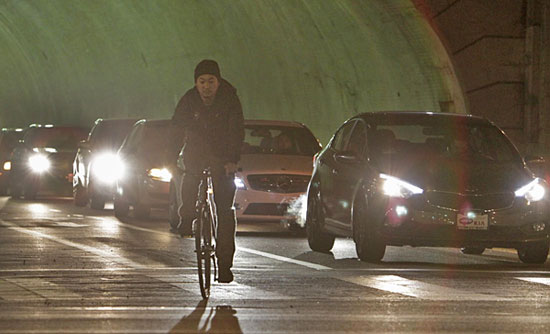
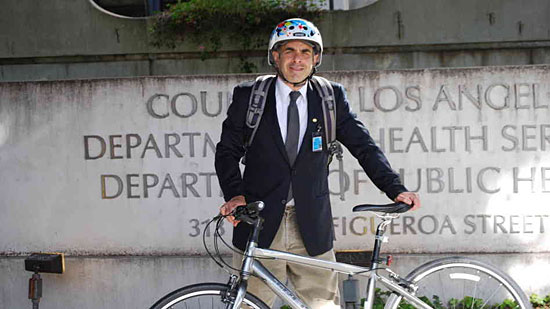



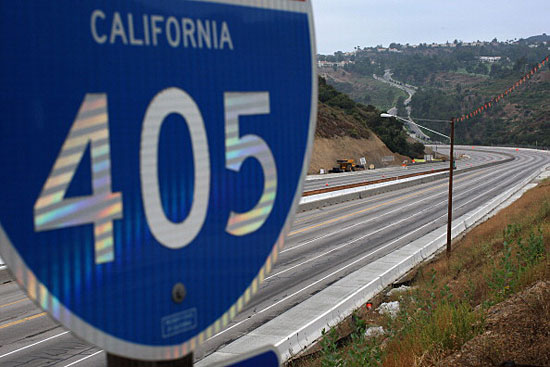
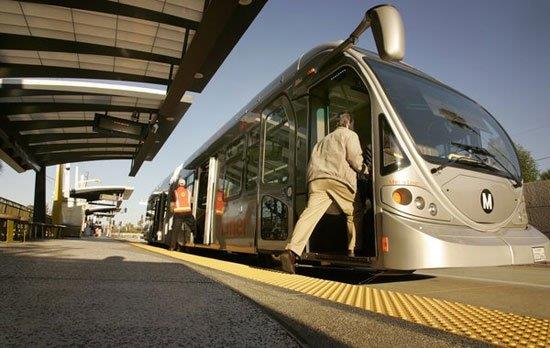
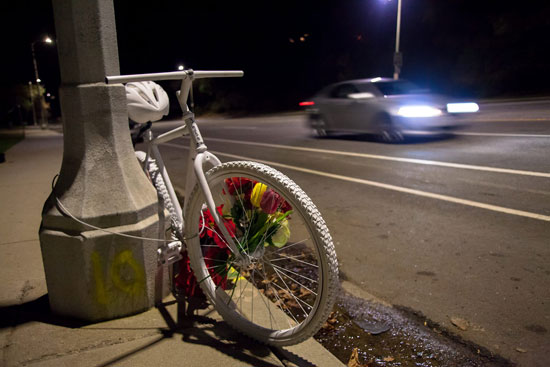
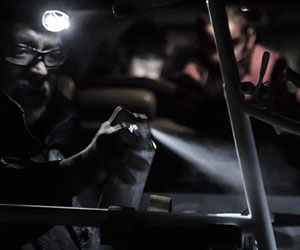
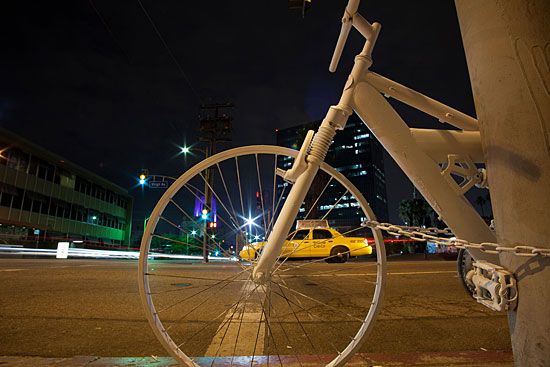
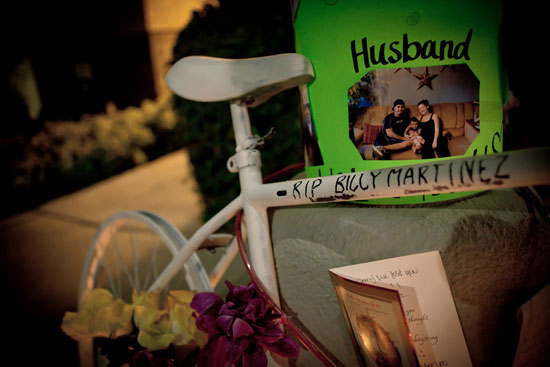
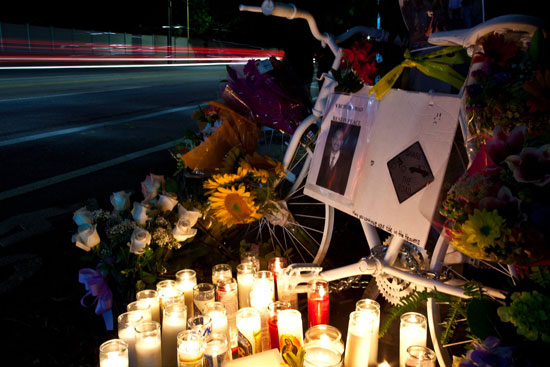
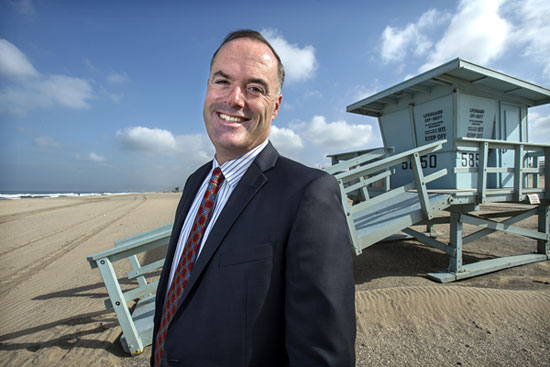
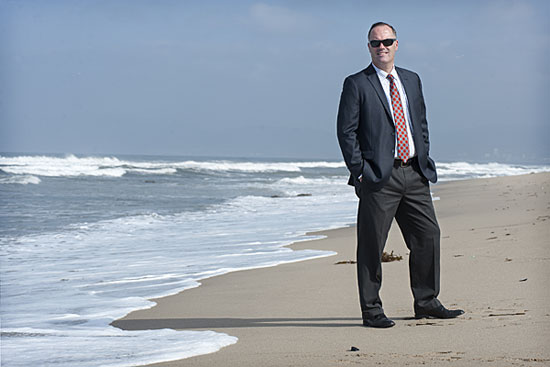





 Check for the latest closure information
Check for the latest closure information








